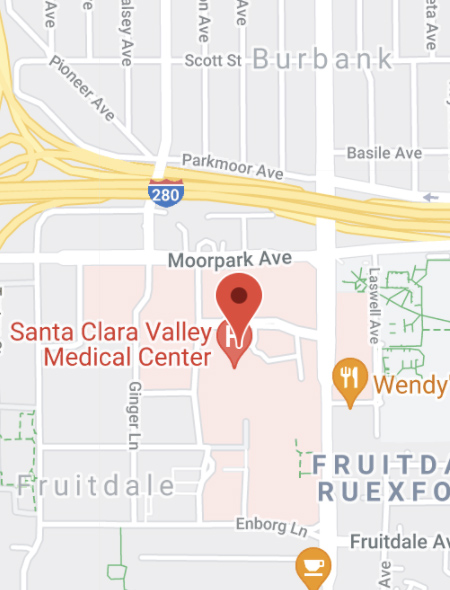Santa Clara Valley Medical Center shows coordinated, compassionate care is essential to delivering change in the opioid epidemic

By Cameron Sullivan
CORRESPONDENT
When discussing opioid use disorders, Dr. Jack Westfall, MPH (Master of Public Health) and medical director of whole-person care at Santa Clara Valley Medical Center (SCVMC), likes to quote Swiss-English writer and journalist, Johann Hari, who said in a 2015 TED Talk, “The opposite of addiction is not sobriety; the opposite of addiction is connection.” With the understanding that people are healthier when surrounded by the love and support of others, team members across and between SCVMC’s primary care clinics are assertively preventing and treating the known opioid epidemic.
At the center of its effort to roll out empathetic programs for opioid misuse prevention and treatment is SCVMC’s mission to provide high-quality whole-person care for all. The deliberately planned, intentionally open-minded approach to community wellness considers the social impacts on health while leveraging community partnerships. And through the process, Dr. Westfall and colleagues get to educate people who misunderstand certain aspects of drug use.
“Anybody who takes opioids for more than a week will become dependent on opioids,” said Dr. Westfall. Whether taking legally prescribed opioids or illicit street variations, dependence after sustained use is a neurobiological certainty. “But the combination of biological dependence and drug-seeking tendencies like borrowing, buying and stealing is defined as addiction.” He noted that, although dependence is a known effect of opioid use, addiction is neither predetermined by dependence nor fully understood.
Interestingly, prevention and treatment of opioid misuse involves unapologetically addressing a need for continued education and training across global medical communities. SCVMC is doing just that, implementing change right here among providers at its primary care clinics.
“Treatment for addiction back in the ’50s required going to a certified addiction clinic,” said Dr. Westfall, adding that the increase in legally prescribed opioids since the 1980s set the stage for an overwhelming epidemic of opioid dependence. And heroin is a lot cheaper than legally prescribed opioids. Around the year 2000, however, a drug called buprenorphine came into being. Not only could the drug treat opioid dependence, but a new law permitted primary care providers to prescribe it after completing a training program.
After decades of not treating addictions, however, many primary care providers across the country hesitated. But in recent years, SCVMC began empowering prescribers and teams across its 10 primary care and ambulatory care centers to prevent opioid dependence, and to treat opioid dependency with buprenorphine when necessary.
“Let’s say a patient presents to a primary care physician with a twisted ankle and is prescribed Percocet,” said Dr. Westfall. “That doctor is going to start the person with a smaller dose than previously was prescribed.” By lowering the initial starting dose and not providing a long supply, practitioners reduce the chance for dependence. “And if your new orthopedist notices you’ve been taking opioids for a long period of time, they’re going to speak with you about how long-term opioid use can actually cause more pain.”
Michael Geller, a physician assistant who works in SCVMC’s Pain Management clinic, said that many people arrive at pain clinics already taking high doses of opioids. Underscoring the idea that a team approach is necessary, he said, “It’s important to have a pain psychologist onboard to help with outside issues not related to pain and dependence; we treat pain as a whole-person issue.” Treatment might involve multidisciplinary care from physical and occupational therapists, chiropractors, acupuncturists, and behavioral and mental health professionals.
If opioid use disorder treatment is a “team sport,” other players include front-line staff members, social workers, behavioral health specialists, nurses and physician assistants, all of whom require education and training for the program to succeed. That’s exactly what is underway at SCVMC’s ambulatory care clinics. “Already, each of our primary care clinics has at least one person who is certified to prescribe buprenorphine for opioid use disorders,” said Dr. Westfall. SCVMC is carefully training and expanding the remaining team members at each center. Valley Health Center Moorpark and Valley Health Center Downtown clinics, for example, have already treated a combined 110-plus patients in the past three to six months.
“We don’t have the answers for why some people move from dependency to addiction,” Dr. Westfall explained. “But we firmly believe that personal connections help people who are suffering from use disorders.” He stressed the importance of each patient having a dedicated primary care physician, not just any doctor. “There’s growing evidence that people who see the same doctor over the long term have better health.”
Trusting relationships form when people can develop meaningful contact and lines of communication with assigned primary care physicians. Through a common mindset and the coordinated ability to provide consistent, compassionate, whole-person care to all, Santa Clara Valley Medical Center is forming those relationships with patients and delivering on that trust.



